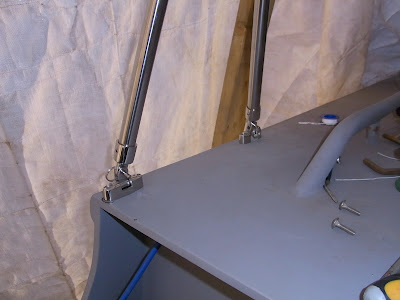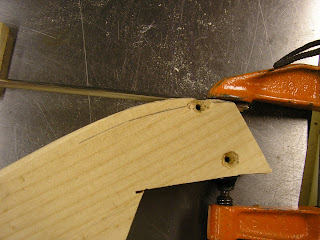All things boating have taken a hammering over the past decade, with most people suffering to a greater or lesser extent through the financial woes that flooded the world. Initially, amateur boatbuilding seemed to stay quite strong, while sales of production boats went into a deep slump.
After amateur boatbuilding also started to weaken, it was interesting (but distressing) to observe the progression of the slowing sales around the world. First to go were the industrialised countries, led by USA and UK, then it spread to less developed countries. It is said that when America sneezes the world will catch the cold. When we lived in South Africa we could watch that phenomenon and knew that what was happening financially in USA, whether up or down, was likely to be mimicked in South Africa within a year or two.
The one market that seemed to stay remarkably buoyant was Russia, where amateur boatbuilding seemed to stay strong. Then war and politics stepped in, the Russian economy took a dive and sales of plans to amateurs in Russia also fell.
Boats are not an essential part of life for most people. For some they are transport or a work implement, for others they are a home but for most people their boats are toys, sporting equipment, or somewhere between, certainly not high on the list of essentials when money becomes tight.
Now we seem to be coming out of that slump. The US economy has been showing signs of life for a year or two and that now seems to be filtering down far enough that amateur boatbuilders are again starting new projects. If the normal pattern pertains, the upswing will spread out to the rest of the world as well.
Over the 35 years that I have been designing boats professionally, I have drawn mostly boats that are suitable for amateurs to build. This was not an intentional path in my design career but, in retrospect, was probably the most natural and logical one. My roots are in amateur boatbuilding, when I built a plywood 36ft cruiser/racer in my in-laws garden, based on a design by Ricus van de Stadt. My own first full design was the CW975 for a 32ft plywood racer/cruiser, which I also built after it won a design competition. The third design that I drew was the steel Pratique 35 cruiser for an amateur-builder friend. Next was the Coquette 39 plywood racer/cruiser commission, also for an amateur. Only after that did I receive my first commission from a professional builder for a production GRP boat.
 |
| My own 2nd big boat project, the CW975 "Concept Won", in my garden. |
This depth of involvement with amateur boatbuilders and designs has resulted in a long string of commissions for amateur builders, mostly for plywood. My own third build big-boat project, in the form of the radius chine plywood Didi 38 "Black Cat", and my well-publicized voyaging in her, have reinforced that trend. For the past 30 years I have always had at least a year of work waiting in line. That has now expanded to a 2-year backlog and I have had to turn away new commissions to keep the backlog somewhat manageable.
As the slump deepened, the average size of boats that people chose to build slipped lower, until we were selling only dinghies and trailer-sailers. Now that average size is starting to creep upward again, as builders move back into bigger boats. The most durable design that we have is the Argie 15, which has developed a good following that keeps it going strongly through thick and thin.
 |
| Argie 15 built by Andrey Borodikhin in Moscow, Russia. |
?
In trailer-sailers, the little gaffers, in the form of the Cape Cutter 19 and Cape Henry 21, are the ones that keep going. These lapstrake plywood boats are more complicated projects than a simple stitch-&-glue boat but they are just so pretty that they have attracted a good following. They have also proven to be quick in the light stuff and capable in the rough stuff, so they have grown a reputation for being desirable boats. That resulted in the upward expansion of this design range with the Cape May 25.
 |
| Beautifully-built Cape Cutter 19, built by Sergio Vianna of Curitiba, Brazil. |
Newest in this series, and already generating much interest even before completion of the design, is the Cape Charles 32. Although not yet on our website and pricelist, drawings have already gone out to the first two builders. This one is a coastal and offshore cruiser, with shallow fixed keel and external ballast, whereas the smaller sisters have steel centreplates and internal ballast. We should have a web page for this design in a month or two. Until then, please email me for info on plan price etc.
 |
| Accommodation layout of Cape Charles 32 cruiser. |
It is not only cruisers that are growing in popularity. One of the commissions that is waiting for attention is a bigger sister to the radius chine plywood Didi 950, at 11.4m (37ft). I have also been asked multiple times to draw a Didi concept to the Class 40 Rule but am not able to fit in the design in a reasonable time, so have turned down the commissions. Meanwhile other larger boats in our radius chine plywood range are also starting in various countries. This includes the first in that series, the Didi 38, with two new builds starting in Asia.
 |
| Didi 950 radius chine plywood racer/cruiser. |
We are also experiencing increased interest in steel cruising designs, which have been very dormant for the past 10 years. Overall, amateur boatbuilding is looking a lot more healthy now than it has for a long time. Now we all need the politicians in all of our countries to play nicely together. If they do that then life should improve for all of us. Lets all go play with our boats.
To see more of these and our many other designs, visit http://dixdesign.com/ or http://dixdesign.com/mobile.































 I put some carpet foam that happened to be nearby under the linkage so the details would not be obscured by background stuff.
I put some carpet foam that happened to be nearby under the linkage so the details would not be obscured by background stuff. There is a anchor bracket that is held by the nut holding on the steering bail and the pivot bracket is as shown. I do not yet have a remote shift/throttle control and cables yet, so Im in the hunt for that stuff. I took a quick look at my pre-1965 Mercury service manual and it shows pictures and instructions for cable hook-up when I get to that point. I found the parts manual on line at the Western New York chapter of the AOMCI website. http://pub9.bravenet.com/photocenter/album.php?usernum=737212788&album=49514#bn-photocenter-1-1-737212788/49514/1/116515/
There is a anchor bracket that is held by the nut holding on the steering bail and the pivot bracket is as shown. I do not yet have a remote shift/throttle control and cables yet, so Im in the hunt for that stuff. I took a quick look at my pre-1965 Mercury service manual and it shows pictures and instructions for cable hook-up when I get to that point. I found the parts manual on line at the Western New York chapter of the AOMCI website. http://pub9.bravenet.com/photocenter/album.php?usernum=737212788&album=49514#bn-photocenter-1-1-737212788/49514/1/116515/








 Following in the footsteps of others, the method chosen to make the pretty stripes and fill the cracks between the planks was pigmented epoxy. A little tape masking, a little white pigment in the epoxy, some white silica thickener, some loading of blank caulking tubes, some epoxy pumped into the grooves, some going all over the tape, some squeegeeing of the mess back into the grooves, some overfilling, some underfilling and turning out the lights and coming back in three hours to remove the tape.....then repeating the next day or so until the whole boat is a mess. After practicing on my sample board, I figured that I would develop a technique that would make the application better as I went along, but it seemed to get worse. Apparently more silica was not the answer as it became impossible to smooth out and was not a smooth consistency, always more like a vanilla milkshake from hell.
Following in the footsteps of others, the method chosen to make the pretty stripes and fill the cracks between the planks was pigmented epoxy. A little tape masking, a little white pigment in the epoxy, some white silica thickener, some loading of blank caulking tubes, some epoxy pumped into the grooves, some going all over the tape, some squeegeeing of the mess back into the grooves, some overfilling, some underfilling and turning out the lights and coming back in three hours to remove the tape.....then repeating the next day or so until the whole boat is a mess. After practicing on my sample board, I figured that I would develop a technique that would make the application better as I went along, but it seemed to get worse. Apparently more silica was not the answer as it became impossible to smooth out and was not a smooth consistency, always more like a vanilla milkshake from hell. 
 Ive got about 2/3 of the stripes smoothed. Then Ill probably sand the entire surface and apply one more coat of epoxy before final varnish coats are applied.
Ive got about 2/3 of the stripes smoothed. Then Ill probably sand the entire surface and apply one more coat of epoxy before final varnish coats are applied.

 For the stainless steel rub rail, I decided to use the 1/2" wide, half oval type since at the back of the boat, the edge is not wide enough for a wider strip. It also seemed like it would be a better look on a small boat. However, there doesnt seem to be any ready made end spears available, so I experimented with shaping and forming the end until I got what I wanted. So heres what I came up with:
For the stainless steel rub rail, I decided to use the 1/2" wide, half oval type since at the back of the boat, the edge is not wide enough for a wider strip. It also seemed like it would be a better look on a small boat. However, there doesnt seem to be any ready made end spears available, so I experimented with shaping and forming the end until I got what I wanted. So heres what I came up with: 


 Laying strip on vice with end hanging off about
Laying strip on vice with end hanging off about  1/2" and forming (pounding away) with a ball peen hammer until underside was flat.
1/2" and forming (pounding away) with a ball peen hammer until underside was flat.
 Polishing with Dremel tool using abrasive rubber polisher.
Polishing with Dremel tool using abrasive rubber polisher.

 Final polish with fine grit abrasive pads (1800 to 4000 grit).
Final polish with fine grit abrasive pads (1800 to 4000 grit).